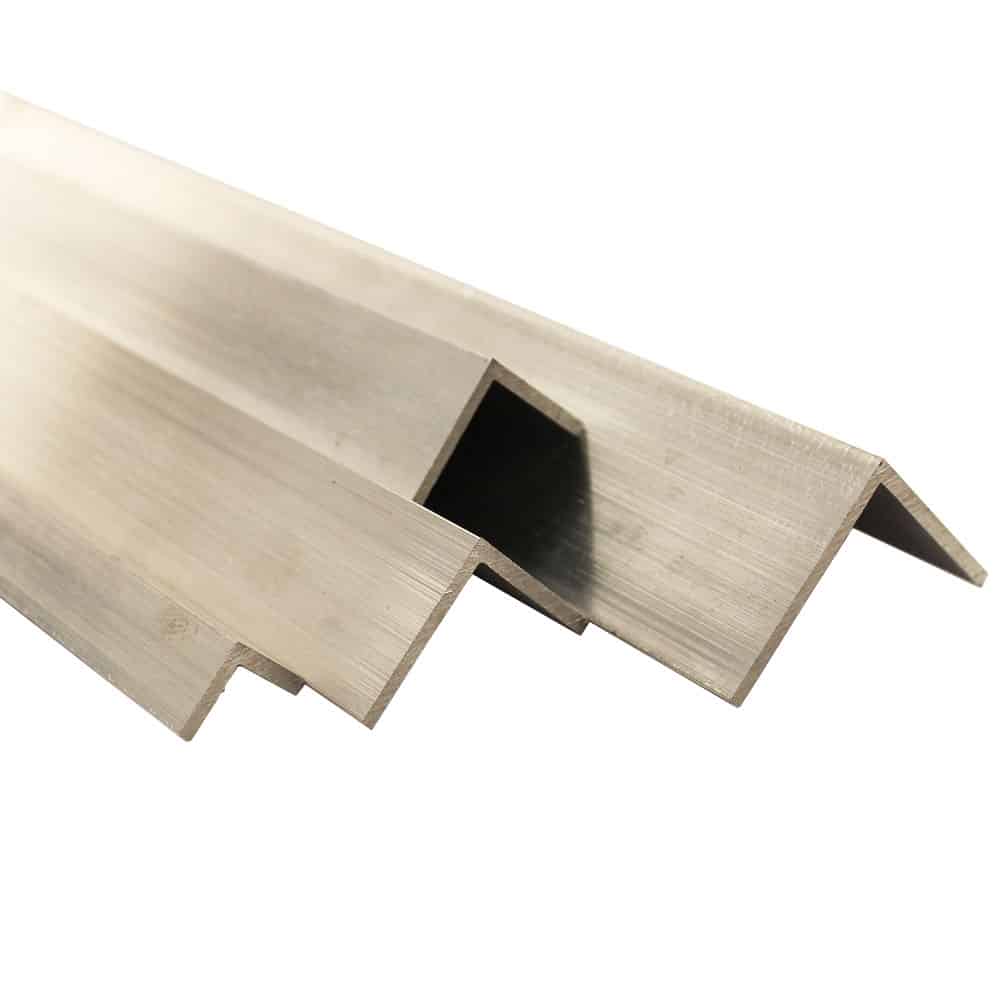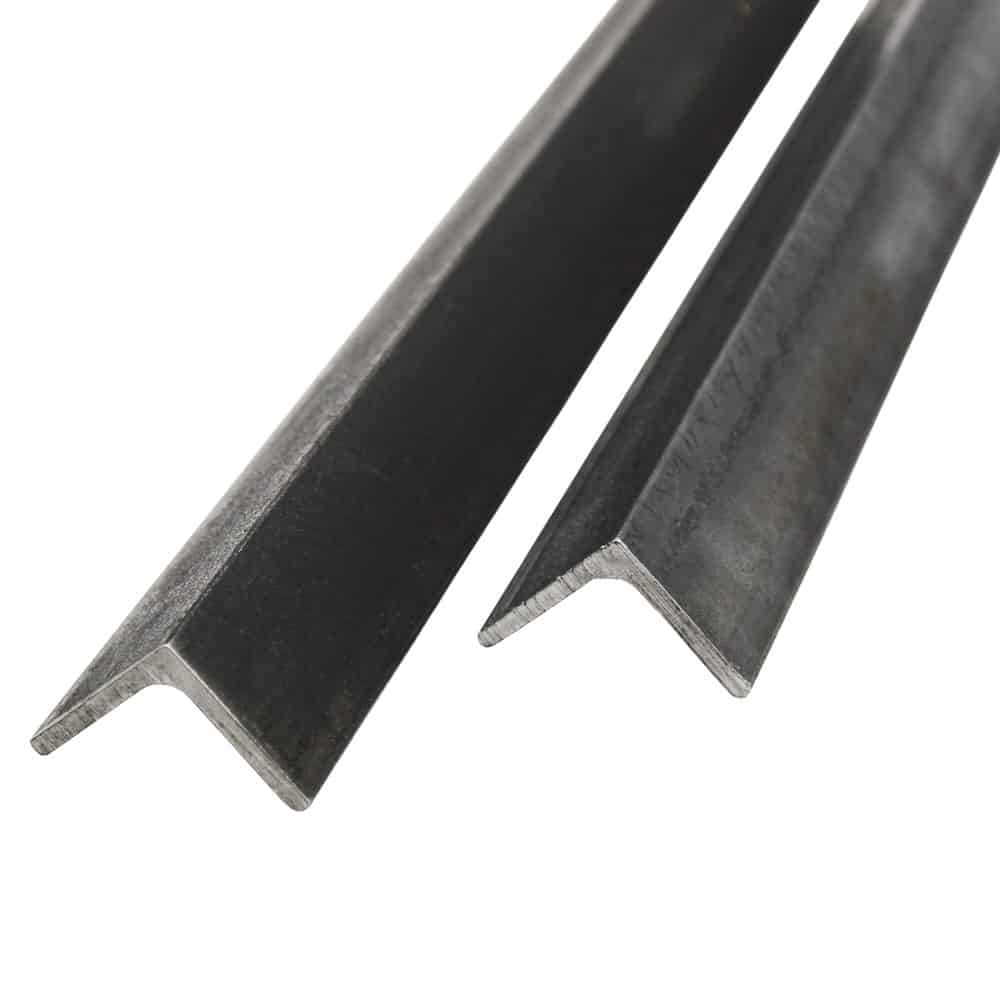- Massive Range
- FREE UK Delivery
- Rapid Dispatch
- Massive Range
- FREE UK Delivery
- Rapid Dispatch
- Massive Range
- FREE UK Delivery
- Rapid Dispatch
£19.99 inc VAT


This website is secured:
✔ Specialists In Rapid Shipments Of Any Size
✔ FREE UK Delivery Included
✔ Immediate Express Dispatch From Stock
✔ Tracked Delivery with Order Updates
✔ 30-Day Returns Accepted
£ Check Out Our Clearance Listing For Savings
@ ☏ Bespoke Cuts & Larger Lengths Available
Looking for a durable and lightweight material for your next project? Look no further than angled aluminium from Speciality Metals! At 38.1mm x 38.1mm x 3.175mm and 1 metre in length, this strip is the perfect size for a variety of applications. But don’t let its lightweight and malleable nature fool you – aluminium has a high strength to weight ratio, making it perfect for projects that require both strength and agility. Plus, it’s corrosion resistant and reflective, ensuring that it will maintain its shine and structural integrity over time.
And when you’re done, it’s easily recyclable, making it an environmentally friendly choice. Choose angled aluminium from Speciality Metals for your next project!

Our top-quality angled aluminium strip is cut, packed and shipped by our terrific team in Warrington, UK within 24 hours. We pride ourselves on our speed for orders of all sizes.
In addition to being a very useful fence post, our angle aluminium bar is also suitable for outdoor or DIY projects. As a result, it offers a solid and lightweight structure as well as a high degree of recycling, making it a very environmentally friendly choice. We offer this section bar in a variety of sizes and thicknesses.
Speciality Metals’ Angled Aluminium 1 Metre Strip is a strong and durable construction material that measures 38.1mm x 38.1mm x 3.175mm. The high strength to weight ratio of this material allows it to be strong without being too heavy. As well as being malleable, it can be shaped and bent according to your specifications. As an added benefit, it is corrosion-resistant and reflective, providing a long-term shine while maintaining its durability. This material also offers the advantage of being recyclable, making it an environmentally friendly choice. Our UK supply ensures that you can find it easily and have it delivered quickly.
We also carry a wide range of aluminium sheet metal, flat bar and round tube.
Speciality Metals is known to be the United Kingdom’s best up-and-coming small-quantity metal company.
Furthermore we stock a vast range of aluminium tube lengths that compliment our mesh range perfectly.
Over 50,000 customers of Specialty Metals are provided with fast, friendly customer service every year. We’re the place to try when you need metal of any shape and size. We’re based in Warrington, UK.
We pride ourselves on our rapid turnaround and a large range of options.
We are developing our online offers to give more customers access to the best metals and mesh available in the UK.
Our mission is to be the UK’s go-to supplier for small-quantity metal requests. With an ever-growing range of products, we provide you with high quality materials, outstanding customer service and fast delivery times.
Yes, it is definitely possible to drill holes into angled aluminium bars. Aluminium is a relatively soft and ductile metal, which makes it relatively easy to drill. However, there are some important considerations to keep in mind when drilling aluminium:
Drill Bit Selection: Use a drill bit designed for drilling into metal. High-speed steel (HSS) or carbide-tipped drill bits are commonly used for drilling aluminium. Make sure the drill bit is sharp and in good condition.
Lubrication: It is important to use a cutting lubricant or cutting oil when drilling aluminium. This will help to reduce friction, dissipate heat and extend the life of the drill bit. There are special cutting oils designed for use with aluminium, but in a pinch, you can also use a light oil or even WD-40.
Drill Speed and Pressure: Use a relatively low drill speed and moderate pressure when drilling aluminium. This will help to prevent the aluminium from melting or gumming up the drill bit. It is always better to start with a slower speed and gradually increase it if necessary.
Pilot Hole: For larger holes, it is recommended to drill a smaller pilot hole first. This will help to guide the larger drill bit and prevent it from wandering.
Clamping: Make sure to securely clamp the aluminium angle bar in place before starting to drill. This will help to prevent the aluminium from moving or bending while you are drilling.
Deburring: After drilling the hole, there may be sharp edges or burrs left on the surface of the aluminium. It is important to remove these by deburring the hole with a deburring tool or a larger drill bit.
To calculate the weight of an aluminium angle bar, you can use the formula:
Weight = Density x Volume
Density: The density of aluminium is approximately 2,700 kg/m³ (or 0.0975 lb/in³).
Volume: The volume of the angle bar can be calculated using its dimensions.
For an aluminium angle bar with equal legs (i.e., both legs are of the same width and thickness), the volume can be calculated using the formula:
Volume = 2 x (Width x Thickness x Length)
For an aluminium angle bar with unequal legs, the volume can be calculated using the formula:
Volume = (Width1 x Thickness x Length) + (Width2 x Thickness x Length)
Where:
Once you have the volume, you can multiply it by the density of aluminium to get the weight of the angle bar.
Example:
Let’s say you have an aluminium angle bar with the following dimensions:
First, convert all dimensions to meters:
Next, calculate the volume of the angle bar using the formula for unequal legs:
Volume = (Width1 x Thickness x Length) + (Width2 x Thickness x Length) = (0.05 m x 0.005 m x 1 m) + (0.025 m x 0.005 m x 1 m) = 0.00025 m³ + 0.000125 m³ = 0.000375 m³
Finally, multiply the volume by the density of aluminium to get the weight of the angle bar:
Weight = Density x Volume = 2,700 kg/m³ x 0.000375 m³ = 1.0125 kg
So, the weight of the aluminium angle bar is approximately 1.0125 kg.
Joining angled aluminium bars can be done through several methods:
Welding: This is one of the strongest ways to join aluminium angles. However, aluminium requires some special considerations when welding. You need to select the right type of filler material (for example, 4043 or 5356 aluminium filler rods are commonly used for welding 6082 aluminium). Additionally, the aluminium surface needs to be thoroughly cleaned and free of any oxide layer before welding. TIG (Tungsten Inert Gas) welding is commonly used for aluminium, but MIG (Metal Inert Gas) welding can also be used.
Bolting: Drilling holes and using bolts and nuts is a straightforward method to join aluminium angle bars. Make sure to use aluminium or stainless steel bolts and nuts to avoid galvanic corrosion.
Riveting: Similar to bolting, but using rivets instead of bolts and nuts. This method is commonly used in aircraft construction.
Screwing: Self-tapping screws can be used to join aluminium angle bars. Make sure to pre-drill holes to avoid splitting the aluminium.
Adhesive: Special adhesives designed for bonding metals can be used to join aluminium angle bars. Make sure to follow the manufacturer’s instructions carefully and allow the adhesive to cure fully before applying any load.
Soldering/Brazing: This is a less common method for joining aluminium because it requires special solder and flux, and the joint is not as strong as a welded joint.
Yes, aluminium angle bars can be used as structural components. Aluminium is a lightweight, strong and durable material, making it suitable for various structural applications. It has a high strength-to-weight ratio, meaning it can support relatively large loads despite its light weight. Aluminium angle bars are commonly used in applications such as framing, braces, support structures and trims. Additionally, aluminium is resistant to corrosion, which makes it suitable for outdoor applications as well. However, it is important to consider the specific requirements of your application, such as load-bearing capacity, deflection and environmental conditions, and to choose the appropriate size, thickness and grade of aluminium angle bar accordingly. It is also advisable to consult a structural engineer or a professional with experience in aluminium construction to ensure the safety and suitability of your design. Also, keep in mind that while aluminium is strong and durable, it is not as strong as steel, so it may not be suitable for applications that require very high strength and rigidity.
The strength of an aluminium angle bar compared to other metals depends on several factors, including the grade or alloy of the aluminium, the temper or heat treatment applied and the size and thickness of the angle bar.
Aluminium alloys are generally lighter than steel and other metals. However, the strength-to-weight ratio of aluminium is higher than many other metals, meaning that for the same weight, an aluminium component can be as strong or stronger than a component made of another metal.
For example, the commonly used 6061-T6 aluminium alloy has a tensile strength of about 310 MPa, while mild steel has a tensile strength of about 370-470 MPa. However, steel is about 2.5 times denser than aluminium, so for the same weight, the aluminium component will be stronger.
In terms of rigidity, steel is stiffer than aluminium, meaning it will deflect less under the same load. However, this increased rigidity can make steel components more brittle and prone to cracking, while aluminium components can flex and absorb energy without cracking.
It is important to consider the specific requirements of your application, such as load-bearing capacity, deflection, weight and corrosion resistance, and to choose the appropriate material accordingly. It is also advisable to consult a structural engineer or a professional with experience in metal construction to ensure the safety and suitability of your design.
Check out our blogs discussing What Can Aluminium Angle Be Used For? and ‘How to Bend Angle Aluminium Bar‘. It will prove a useful read to help you to make an informed decision on which material would work best for you.
We are also very proud of our ever expanding YouTube channel.
Our goal for our blogs, videos and help guides is to answer as many questions as possible to help to explain the possibilities of mesh to our customers. Contact us today if you have any questions at all. We are always really keen to help in any way that we can.
We are also very proud of our highly popular eBay store, check us out there too.
Thank you for checking out our product.
£10.99 – £13.99Price range: £10.99 through £13.99 inc VAT
£13.99 – £21.99Price range: £13.99 through £21.99 inc VAT

£10.99 – £13.99Price range: £10.99 through £13.99 inc VAT

£13.99 – £21.99Price range: £13.99 through £21.99 inc VAT